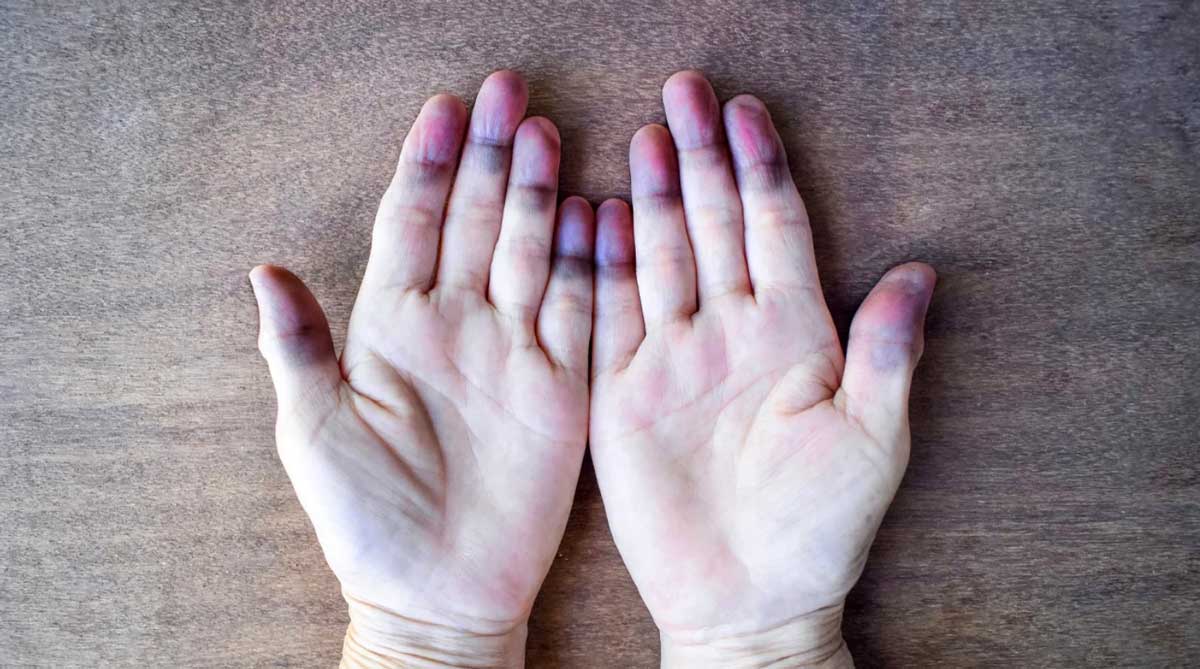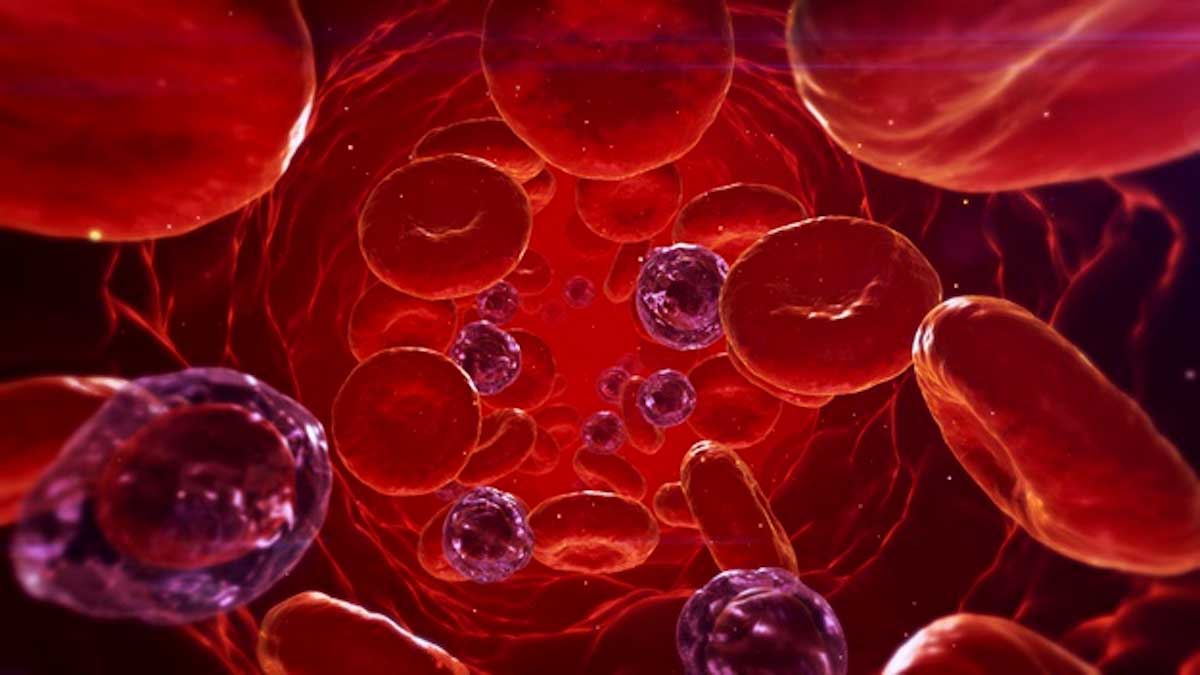
The Blue Fugates have been called many names. Many of them have to do with the fantasy characters we assume are the only people able to change color. When one thinks of blue-skinned people, characters like Avatar could come to mind, or possibly even the Smurfs. Even though the blue Fugates of Kentucky were, in fact, blue, it was not a result of magic nor of eating a piece of blueberry chewing gum à la Charlie and the Chocolate Factory. While the fantasy of the blue Fugates is enjoyable, the reality is all the more fascinating. Here are 8 facts that might surprise you about the blue Fugates.
1. Martin Fugate Was Not American

Martin Fugate, the patriarch of the Fugate family, was born in France. Not much is known about his early years, except that he was orphaned, and in 1820, he moved to Kentucky. During this time, the United States was in the business of giving away land to those who could build homesteads. Fugate, a poor immigrant, took advantage of this in the state of Kentucky, which had only been admitted to the Union 30 years before his arrival.
After establishing his homestead in the hills of Eastern Kentucky, Fugate met Elizabeth Smith, with whom he had seven children. Unbeknownst to the Fugates, they both carried a rare recessive gene that caused blue skin in four of their children. Due to the isolated nature of their home in Appalachia, the Fugate children intermarried. One of Martin and Elizabeth’s sons, Zachariah, married his maternal aunt, and their eight children continued to marry into branches of the same family, passing the blue skin along with them.
2. There Can Be Many Causes of Blue Skin

The Fugates’ condition is a rare medical condition called methemoglobinemia, which disallows hemoglobin in the blood from circulating oxygen properly and darkens the blood, thus, making the skin appear blue. However, many other conditions and factors can cause blue skin.
Get the latest articles delivered to your inbox
Sign up to our Free Weekly Newsletter
Methemoglobinemia is one of the rare instances in which someone would develop blue skin. In the Fugate family, their blue skin was simply a cosmetic change. In most cases, blue skin is a sign of a more serious problem within the body. According to the National Health Service of the UK, blue skin can be caused by pneumonia, congenital heart disease, blood clots, or Raynaud’s, which is a circulation disorder. Cyanosis, the technical name for skin turning blue, can also be caused by ingesting colloidal silver or oxygen-blocking drugs.
The condition of the Fugate family is only peculiar because their blue skin was not a temporary symptom, nor was it an indicator that they were ill. It was easily reversible by the injection of blue dye. It seems that most conditions that cause blue skin are the same in that they are reversible or treatable.
3. The Fugates’ Skin Made Them Outsiders

The Fugates also married into several other families within their community. The area of Kentucky where the family settled was isolated, with no railways or real roads. They had no choice but to marry the people who were near to them, which were, in many cases, their cousins. As the years went on, this began to isolate the Fugates further within their community. The blue skin that was passed from generation to generation was an indicator of backward inbreeding and a cause of shame.
Appalachia is also a very culturally rich area steeped in storytelling, tradition, and, unfortunately for the Fugates, superstition. As their story spread through Eastern Kentucky, so too did the rumors surrounding the family and the intolerance toward their skin. Often, family members weren’t even called by their given name, but a nickname with “blue” somehow slipped into it. For example, Lorenzo Fugate, a descendant of the early 20th century, was known by the moniker “Blue Anze.” They were treated as outsiders in a twofold way, as they were isolated in their hollers and they were blue.
4. Their Blood Was Also a Different Color

While the Fugates’ most noticeable feature was the color of their skin, their condition also caused other anomalies in their bodies. Their blood, for instance, was a chocolate brown color. While these color changes were strange, they were not harmful to the Fugates. On the contrary, many family members lived into their 90s, and they had multitudes of healthy children.
The Fugates were also different from other people who suffered from methemoglobinemia. According to the National Medical Library, inherited methemoglobinemia has two types. Type one occurs when the enzyme diaphorase is absent in the body, and type two is when the same enzyme simply doesn’t function. The entire Fugate family, due to inbreeding, inherited type one methemoglobinemia.
This was also less dangerous than other forms of the condition caused by ingestion of certain antibiotics, nitrates, or food additives. On average, human blood only contains less than one percent methemoglobin, while those who suffer the adverse effects of methemoglobinemia have, on average, over 20 percent methemoglobin in their blood. In those who acquire the condition, this causes central nervous system depression, nausea, vomiting, seizures, and metabolic acidosis. The Fugates, however, never suffered any symptoms beyond their appearance since each blue-skinned family member had between 10 and 20 percent methemoglobin, which only caused cosmetic symptoms.
5. The Blue Fugates Were Hard to Find

In 1960, Dr. Madison Cawein, a hematologist at the University of Kentucky, was intrigued by blood. When he began hearing rumors about blue people in Eastern Kentucky, he developed a mission for himself: to find these people and see what was happening in their blood. He traveled eight hours to Hazard, a small town near Troublesome Creek. There he encountered even more stories about the blue families who lived in isolated hollows in the hills.
Ruth Pendergrass, a nurse at Hazard’s American Heart Association Clinic, was eager to help Dr. Cawein. She had encountered a blue member of the Combs family at the county health department when the woman walked in asking for a blood test. Pendergrass thought the woman was in cardiac arrest because of her dark blue color. The woman didn’t die, but she did inform the nurse that she was a member of the Blue Combses who lived on Ball Creek. Since then, Pendergrass began attempting to stir up medical attention to the blue folks in the area.
Cawein and Pendergrass scoured the hills of Eastern Kentucky, looking for blue people. They went up and down through the mountain hollows, facing “the two mean dogs that everyone had in their front yard.” Despite their exhaustive efforts, the pair couldn’t catch up with the blue families. If they spotted someone at the top of a hollow, by the time they had made the trek up, they were long gone. Frustrated, Cawein and Pendergrass were close to giving up when, by chance, two blue siblings from the Ritchie family walked into the heart clinic.
6. The Blue Fugates Did Not Know What Disease They Had

After Dr. Cawein had convinced Patrick and Rachel Ritchie, the blue siblings, to come into the clinic, he could only ascertain that they were embarrassed to be blue. His examinations and tests yielded no abnormal results. He was stumped. The siblings themselves could offer no clues as to what made their skin blue. Throughout the hundreds of years that the Fugate family and their descendants came out blue, there was speculation about various causes for their color.
Many believed there was something wrong with their lungs, hearts, or even their souls, in some cases. Appalachian old-timers speculated that their blood was too close to the surface of their skin and that the issue could be one of race.
These explanations, of course, were not correct. The Fugate descendants were blue because of their abundance of methemoglobin, which Dr. Cawein only ascertained after reading a medical account of a similar phenomenon in Native Alaskans, who lacked the enzyme diaphorase. The solution was simple to Cawein: methylene blue. This dye, mostly used to see cells on microscope slides, was injected into the Ritchie siblings, and they turned pink for the first time in their lives.
Since the methemoglobinemia had no adverse effects on the health of the blue people, they didn’t need to be treated with anything other than the blue dye, which acted as a replacement for the lack of diaphorase and helped the hemoglobin and methemoglobin become more balanced. The siblings were given tablets to take every day, and their skin retained its caucasian coloring.
7. The Blue Fugates Aren’t the Only Blue People

As mentioned previously, methemoglobinemia is not the only condition that causes blue skin. Thus, there are many more blue people. The Fugates’ condition only affected 500 people in the world as of 1982, most of those residing in Appalachia. The most famous case of someone turning blue, however, has to do with colloidal silver.
Paul Karason was a healthy adult with white skin and red hair when he began taking drugs that contained colloidal silver. He was attempting to treat his skin conditions, like eczema, when he began turning a bluish-gray color. Karason is the most famous blue person known today, as he was very open with his condition and even earned the nickname “Papa Smurf.”
Another case of Argyria, that of Rosemary Jacobs, is much darker. When she was young, she suffered so many colds that her doctor prescribed allergy drops containing colloidal silver. Jacobs has struggled with her condition for her entire life and says that her doctor’s willingness to listen to debunked homeopathic methods of allergy control is to blame.
There are also other patients with methemoglobinemia, such as a 28-year-old woman who suffered from blue skin and other life-threatening effects. She was treated but nearly died because the levels of methemoglobinemia in her blood were over 20 percent.
8. There Are Still Fugates in Kentucky

As of 1999, Benjamin Stacy was still alive and living in Kentucky. He was the last known blue descendant of the Fugates, but more may be scattered throughout the country. After the introduction of the railway, mines, and modern roads, the branches of the family began marrying outside of their small community. This lack of inbreeding, in addition to the methylene blue supplied by Dr. Cawein, means that, likely, the Fugate descendants look like any other person these days.

Family roots in Appalachia run deep. There are still Fugates, Stacys, Ritchies, and Combses in Kentucky. However, we may never know if there are any blue family members left, and we can only rely on the lore of the area to continue telling the Fugates’ story.








